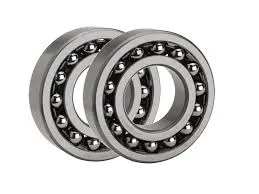
Nov . 09, 2024 11:35 Back to list
L44610 Bearing Specifications and Applications for Industrial Use
Understanding the L44610 Bearing A Comprehensive Overview
Bearings are essential components in various machinery, enabling smooth rotational or linear movement between parts. One of the lesser-known yet critical types of bearings is the L44610 bearing. This article delves into the specifics of the L44610 bearing, its applications, benefits, and maintenance requirements.
What is the L44610 Bearing?
The L44610 bearing is a tapered roller bearing. Tapered roller bearings are designed to support both radial and axial loads and consist of an outer ring (cup), an inner ring (cone), tapered rollers, and a cage. The name “L44610” refers to a specific size and design standardized by the American National Standards Institute (ANSI) and widely recognized in the industry.
The L44610 bearing features a cone width of approximately 0.704 inches (17.88 mm) and a cup width of about 0.706 inches (17.92 mm). These dimensions make it suitable for various applications where load carrying capacity and stable performance under radial and axial forces are essential.
Key Applications
L44610 bearings are commonly used in the following applications
1. Automotive In vehicles, these bearings play a crucial role in wheel hub assemblies, transmission systems, and differentials. They are designed to handle heavy loads while maintaining precise alignment and smooth motion.
2. Industrial Machinery Many types of industrial machinery, particularly those that require high-load capabilities and durability, utilize L44610 bearings. This includes conveyor systems, gearboxes, and material handling equipment.
3. Trailers The L44610 bearing is often found in trailer hubs, supporting the weight of the trailer and the load it carries. Their design provides enhanced performance in situations that demand reliability, especially when traveling on uneven terrain.
4. Agricultural Equipment Agricultural machinery such as tractors and harvesters require robust bearings that can withstand varying speeds and load conditions, making the L44610 a popular choice in these applications.
Benefits of L44610 Bearings
The advantages of using L44610 bearings include
l44610 bearing

- Durability Made from high-quality steel, L44610 bearings exhibit exceptional resistance to wear and tear, enabling them to withstand harsh operating conditions.
- Load Capacity The tapered roller design of L44610 bearings allows them to handle a significant amount of radial and axial load, making them ideal for heavy-duty applications.
- Reduced Friction The cage design helps keep the rollers evenly spaced, reducing friction and prolonging the lifespan of the bearing.
- Versatility With various sizes and configurations available, the L44610 bearing can be integrated into different machines and systems with ease.
Maintenance and Care
Proper maintenance of L44610 bearings is essential for ensuring optimal performance and extending their service life. Here are some maintenance tips
1. Regular Inspection Periodically inspect bearings for signs of wear, such as pitting or discoloration on the raceways. Early detection of issues can prevent catastrophic failures.
2. Lubrication Adequate lubrication is vital for reducing friction and preventing overheating. It is crucial to use the correct type of lubricant, whether grease or oil, and to follow the manufacturer's recommendations for intervals and quantities.
3. Alignment Ensure that bearings are correctly aligned during installation. Misalignment can lead to uneven wear, increased friction, and premature failure.
4. Environmental Protection Protect bearings from contaminants such as dirt, moisture, and chemicals, which can adversely affect their performance. Using seals or shields can help maintain a clean operating environment.
Conclusion
The L44610 bearing is a robust, versatile component widely used in various applications, particularly in the automotive and industrial sectors. Understanding its design, benefits, and maintenance requirements can significantly impact the longevity and reliability of machinery. By investing in quality L44610 bearings and adhering to best practices for care, industries can enhance performance, reduce downtime, and ultimately improve productivity.
Latest news
-
Premium Deep Groove Ball Bearings | High Speed & Reliability
NewsAug.29,2025
-
Durable Scaffolding Clamps - Secure & Reliable Tube Connectors
NewsAug.28,2025
-
Common Failures in Thrust Ball Bearings and Solutions
NewsAug.22,2025
-
How Tapered Roller Bearings Can Take Shock Loads
NewsAug.22,2025
-
Angular Bearings in High-Precision Spindles
NewsAug.22,2025
-
The Impact of Misalignment on Cylindrical Roller Bearing Performance
NewsAug.22,2025
